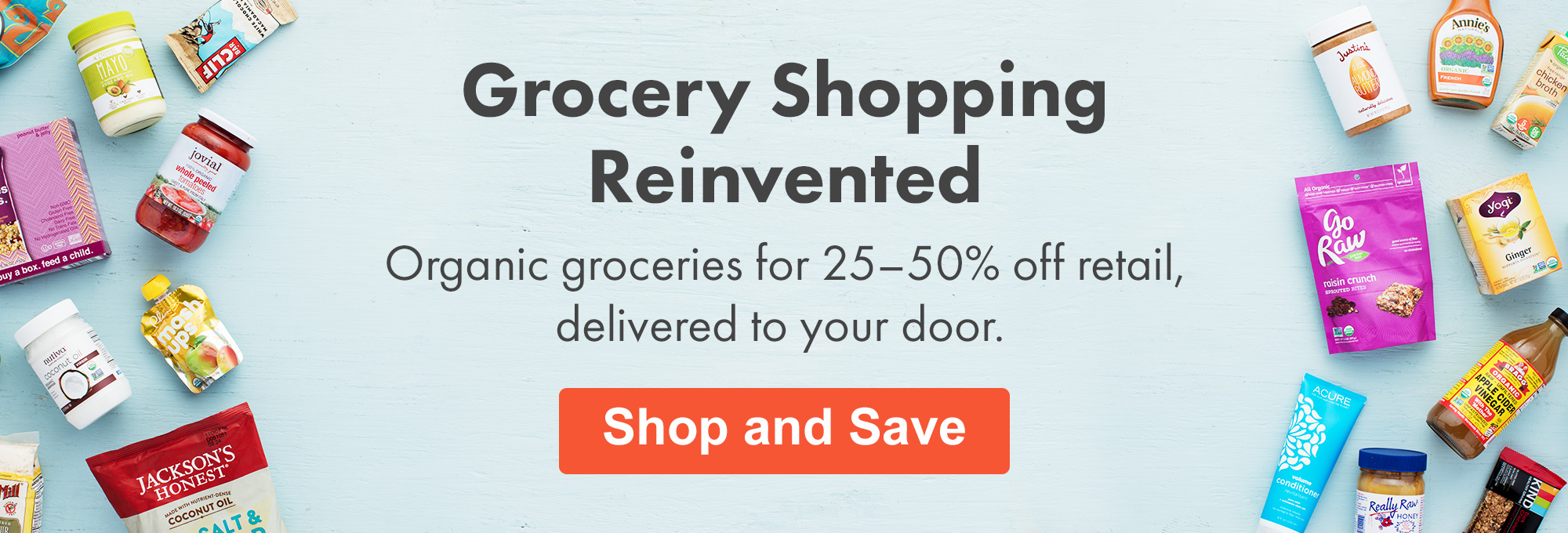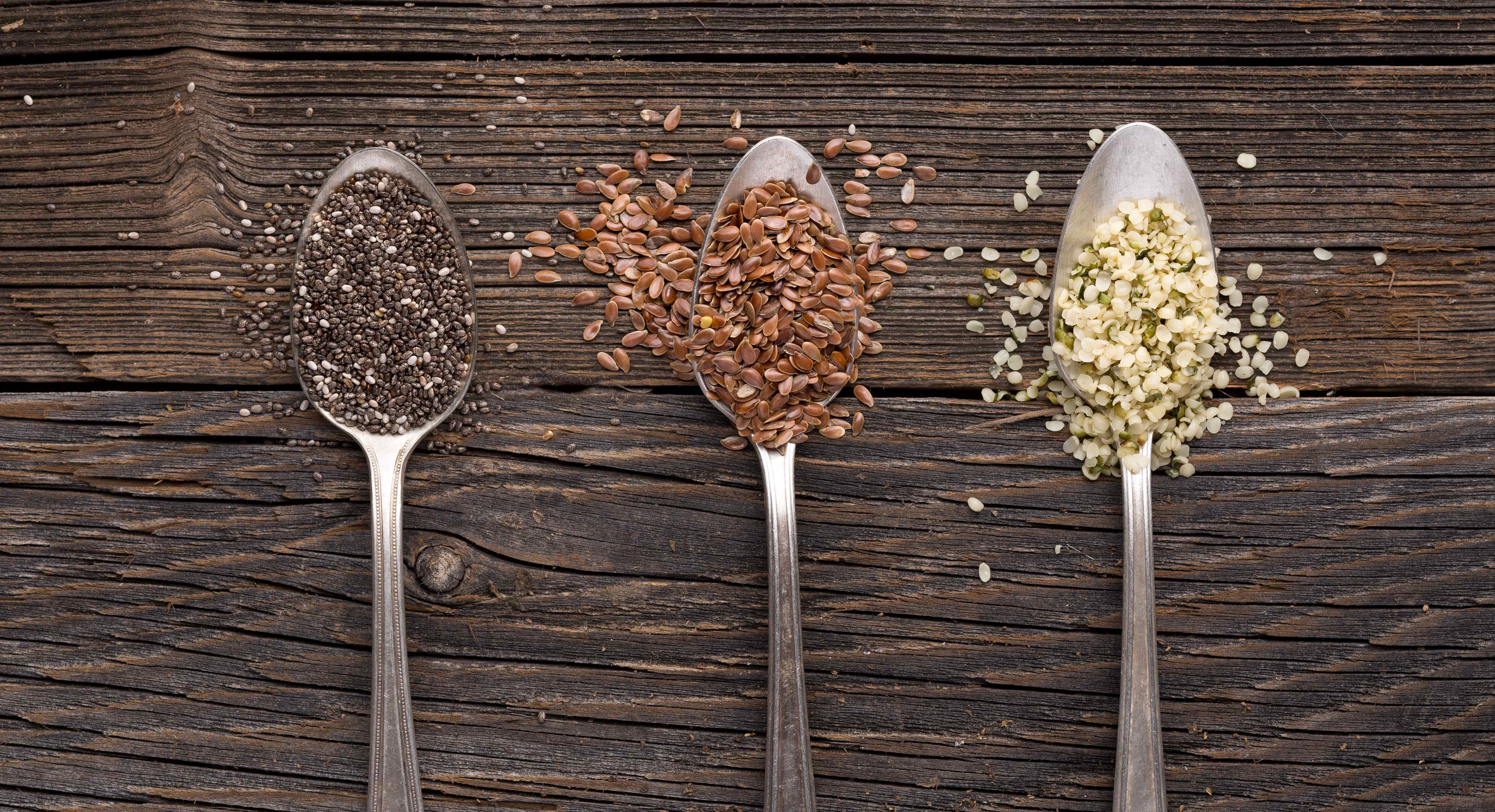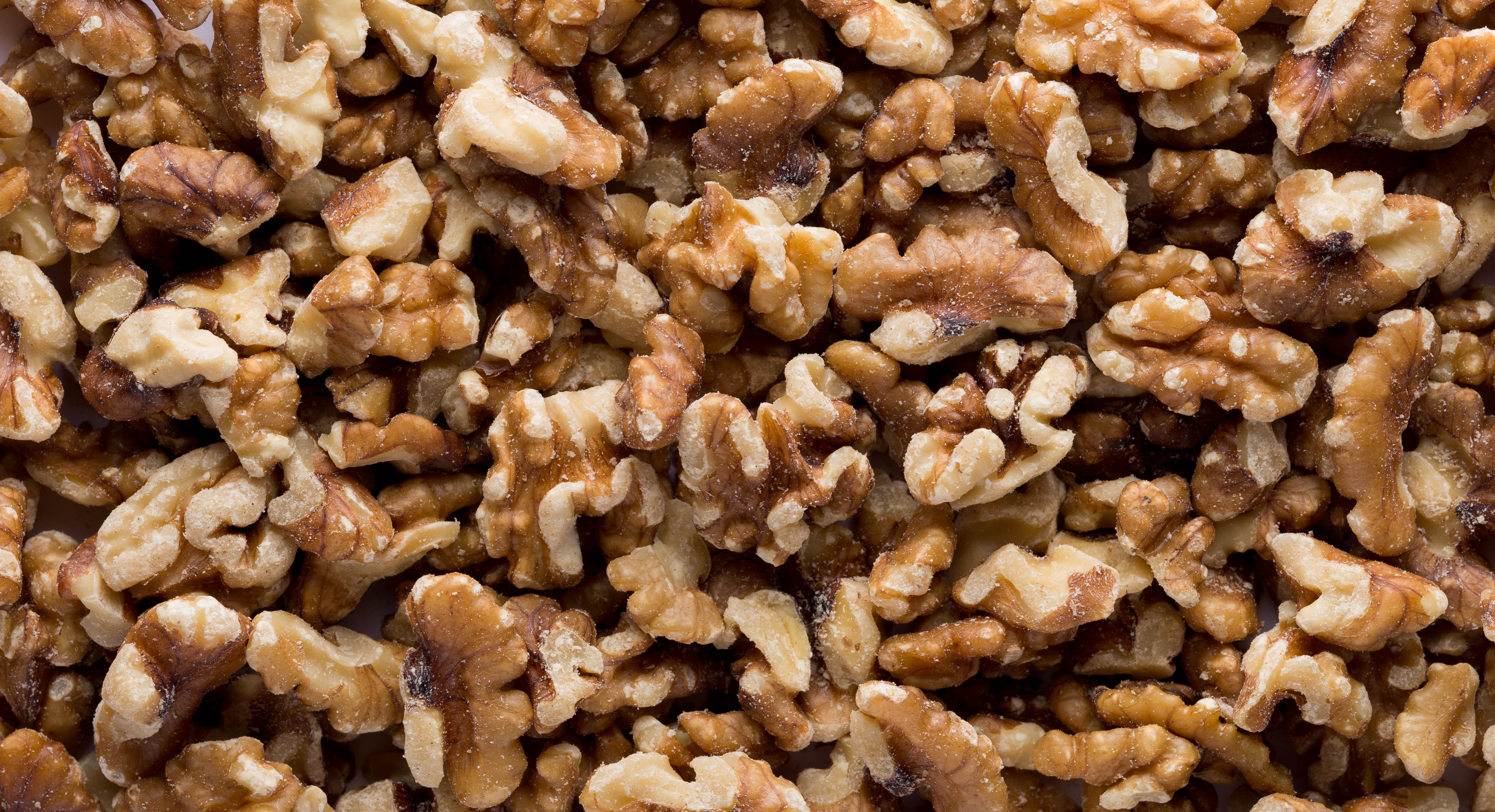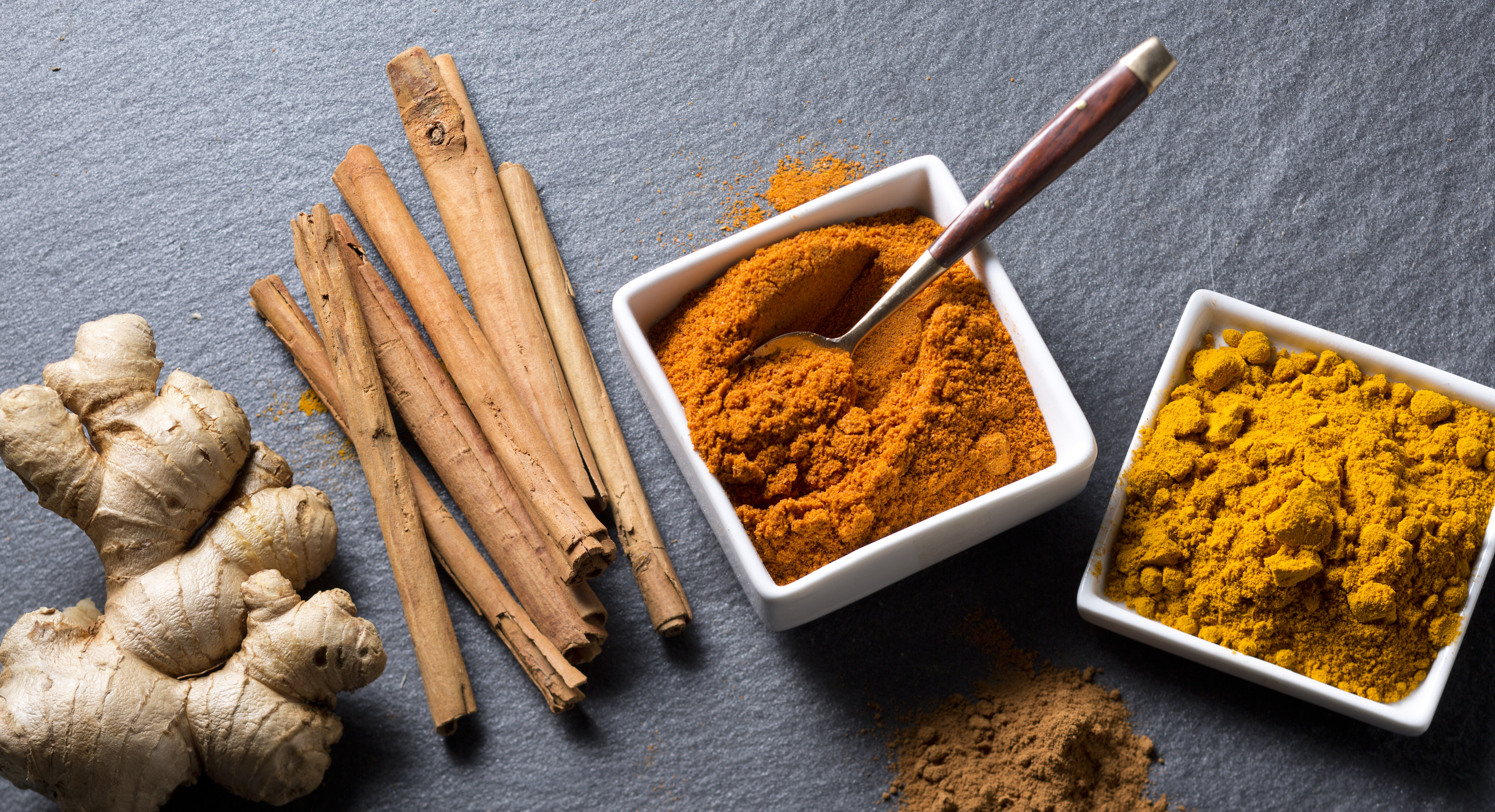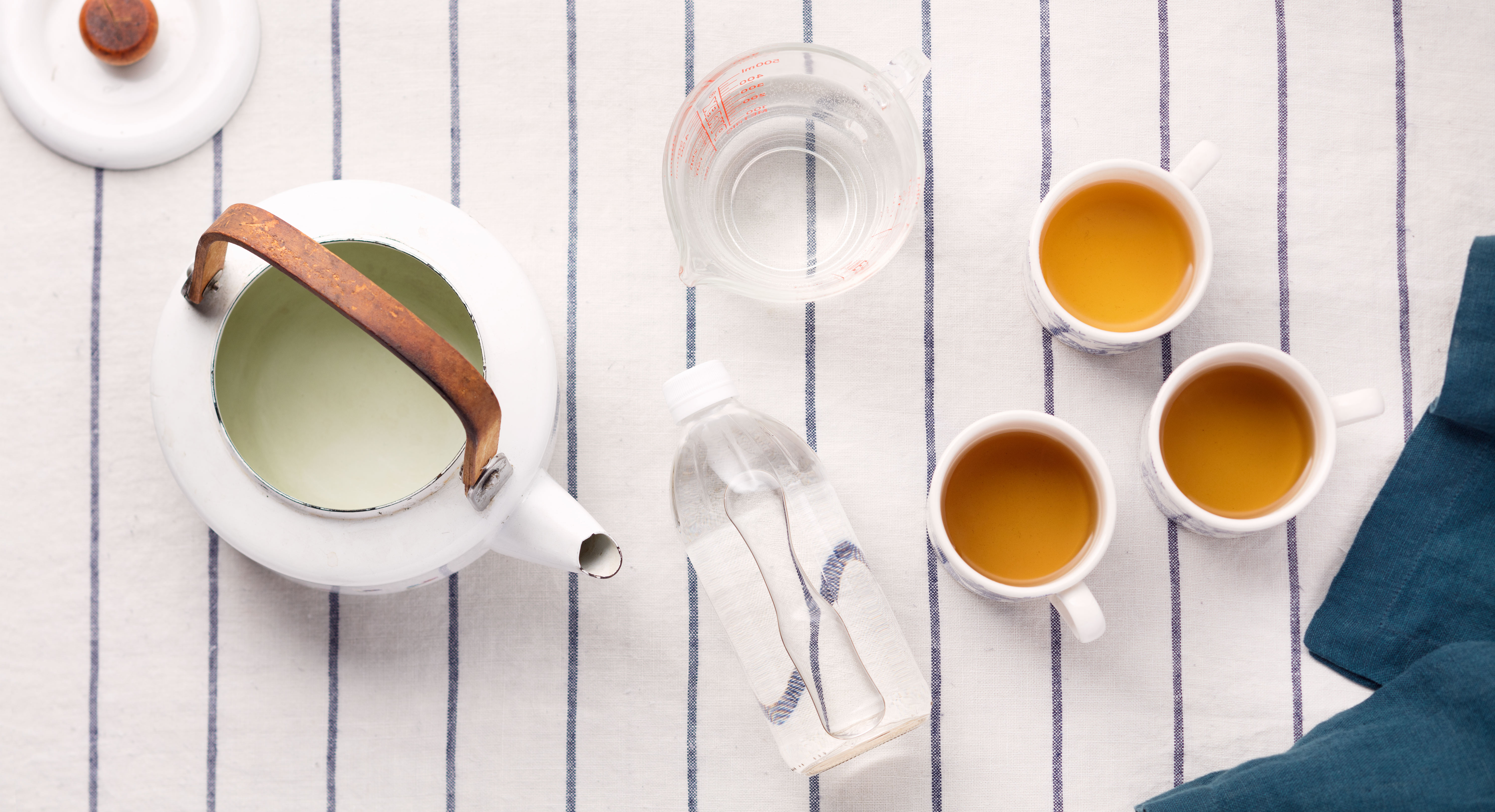Natural Anti-Inflammatory Foods
Publish Date: February 12, 2016
Last Update: January 12, 2026
Recently, we saw a before-and-after picture of a woman that stunned us. After a month on a doctor-prescribed anti-inflammatory diet, her skin glowed, her acne cleared up, and her under-eye bags had vanished. On top of that, she felt more energized, which helped during workouts, and for the first time ever, she saw definition in her abs, all thanks to natural anti-inflammatory foods.
But natural anti-inflammatory foods aren’t just ideal for beauty boosting. They can do so much good for your body from the inside out. Here’s everything you need to know about reducing inflammation by changing the way you eat.
What is inflammation?
Acute inflammation is the body’s natural response to protect itself from infection [1]. But when that response is prolonged, it leads to chronic inflammation, a sign that the immune system is stuck in overdrive. Some common causes of this condition are [2]:
- Stress
- Environmental toxins
- Lack of sleep
- Poor digestive health
There is no definitive test to diagnose chronic inflammation, but Dr. Frank Lipman recommends testing the levels of C-reactive protein (a pro-inflammatory marker released by the liver into the bloodstream) in your blood to distinguish if inflammation might be your issue.

Symptoms of chronic inflammation
Aside from going to the doctor for a blood test, there are some everyday warning signs that might indicate chronic inflammation [3] [4], like:
- Frequent hot flashes
- Red, itchy skin
- Acne
- Allergies
- Weight gain
- Bloat
- Digestive issues
- Joint pain
- Fatigue
- Depression
- Neurological disorders (Parkinson’s, Alzheimer’s, dementia)
- Autoimmune diseases (Type I diabetes, rheumatoid arthritis, multiple sclerosis)
If you never address the issue and live with chronic inflammation, you’re more likely to experience health issues and diseases including:
- Accelerated aging
- Heart disease
- Obesity
- Diabetes
- Dementia
- Cancer
Health benefits of anti-inflammatory foods
There’s a lot that can be done to prevent these issues from taking over your body. Diet plays a huge role- and that means more natural anti-inflammatory food.
It starts with the gut, which is designed to fight viruses and bacteria in food before they can infect the body. Fast food, unfortunately a big part of the standard American diet, is one of the most inflammatory food groups [5]. The best way to offset the damage and cool inflammation on a cellular level is to eat a diet of anti-inflammatory foods [6].
Some nutritionists and health experts tout the Mediterranean diet, which centers around fruits, vegetables, nuts, whole grains, fish, and healthy oils—the types of foods people eat in Crete, Greece, and southern Italy [7]. The region is notable for super low rates of chronic diseases and long life expectancy compared to the rest of the world, despite minimal access to medical care.
Fiber
“Fiber is one of the best and most well studied anti-inflammatory foods.” —Kathryn Bloxsom
According to registered dietitian Kathryn Bloxsom, fruits and vegetables with vitamin C and E, papain (a protein-digesting enzyme), beta-carotene, manganese, and particularly, lots of dietary fiber are ideal for soothing inflammation. Studies have shown that people who eat high-fiber diets have lower levels of C-reactive protein (CRP), a pro-inflammatory marker that’s associated with autoimmune diseases like rheumatoid arthritis and diabetes [8].
Most people don’t get an adequate amount of fiber each day. Women require 25 grams daily, and men need 38 [9]. To meet this need, eat a variety of fiber-rich colorful fruits and vegetables, sea vegetables, seeds, legumes, and whole grains. Here are some that fit the bill for your anti-inflammatory shopping list.

Fruits and vegetables
- Papaya
- Pineapple
- Peaches
- Nectarines
- Oranges
- Grapefruit
- Plums
- Pomegranates
- Apples
- Cantaloupe
- Apricots
- Sweet Potato
- Pumpkins
- Carrots
- Beets
- Squash
- Kelp
Seeds and legumes
- Flaxseeds
- Chia seeds
- Black beans
- Black-eyed peas
- Chickpeas
- Lentils
Grains
- Brown rice
- Buckwheat
- Barley
- Quinoa
- Steel-cut oats
Omega-3 fatty acids
Omega-3s are essential fatty acids, but since the body can’t produce them on its own, you have to get them through food sources [10]. Highly anti-inflammatory, omega fatty acids have also been proven to reduce the activity of autoimmune diseases such as arthritis, Crohn’s disease, ulcerative colitis, and lupus [11]. Fatty fish are a great source of omega-3s [12] —reach for any of the following for a protein-filled anti-inflammatory meal:
Plant-based sources of omega-3s
You don’t have to load up on seafood to get maximum omega-3s. There are vegan and vegetarian sources like nuts and seeds, too. What’s more, foods with a high concentration of plant-based omega-3s may also contain antioxidant phytonutrients and polyphenols that are anti-inflammatory [13], according to Bloxsom. Here are some veggie-friendly sources:
- Walnuts
- Walnut oil
- Pistachio oil
- Macadamia nut oil
- Extra virgin olive oil
- MCT oil
- Chia seeds
- Flaxseeds
- Hemp seeds
One caveat: Not all omegas are created equal. While omega-6s (found in grape seed oils, sunflower seeds, and mayonnaise, to name a few) do play a role in brain function and normal growth and development, if they highly outnumber omega-3s in a diet, they can actually increase inflammation [14]. Try to maintain balance by consuming plenty of omega-3s.
Herbs and spices
“Herbs and spices are also potent antioxidants,” says Bloxsom “Many of them have been used for their anti-inflammatory benefits for centuries in cultures around the world, and science is starting to back up what folklore has long suggested.” Ginger, revered as a healing ingredient for ages, has been proven to have anti-inflammatory properties [15]. Turmeric is believed to be as effective as hydrocortisone in fighting inflammation, thanks to its magic compound curcumin [16]. And scientific evidence also supports garlic’s positive effects on inflammation and immune response [17].
Here are some amazing herbs and spices to transform your diet and your meals—they boost the flavor of any dish naturally. No excess sodium here!
- Ginger
- Basil
- Mint
- Cilantro
- Parsley
- Turmeric
- Curry powder
- Cinnamon
- Clove
- Raw garlic
- Cayenne pepper
- Chili peppers
Leafy greens and cruciferous vegetables
When mom told you to eat your veggies, she was on to something—and the greener the better. So rich in antioxidants, including vitamin E, which can protect the body from inflammatory cytokines [18], dark leafy greens and cruciferous vegetables also boast high concentrations of vitamins, minerals, and phytochemicals [19]. Here are some natural anti-inflammatory superfood veggies that never, ever get old.
- Kale
- Spinach
- Collared greens
- Swiss chard
- Cabbage
- Bok choy
- Brussels sprouts
- Broccoli
- Cauliflower
Berries
They say never judge a book by its cover. But in the case of berries, their vibrant hues belie the incredible antioxidants inside. They’re rich in flavonoids and polyphenol compounds, particularly anthocyanins, which give them their stunning colors. These antioxidants have been shown to reduce markers of inflammation. For extra free radical–fighting power, choose a rainbow of fruits like these:
- Blueberries
- Blackberries
- Raspberries
- Tart cherries
- Cranberries
- Strawberries
- Golden berries
- Goji berries
Fermented foods
When the gut microbiome is off, it can result in inflammatory responses such as bloating, diarrhea or constipation, gas, pain, heartburn, or acid reflux. One of the keys to fighting this inflammation of the digestive tract is to treat it with gut-healing foods.
“It’s estimated that roughly 70 to 80 percent of your immune system is in your gut. Feed it poorly and your gut will be left with few defenses, easily overwhelmed by bad bacteria, wide open to disease-triggering inflammation and plagued by gastrointestinal ills like IBS-type symptoms (i.e., gas, bloating, constipation, diarrhea, etc.). In your weakened state, you may also be more susceptible to colds and flu. But, if you introduce good bacteria into the gastric mix via fermented foods, you’ll enable your gut to crush opportunistic invaders and disease-triggering inflammation, long before they can gain the upper hand. Simply put: A healthy, balanced gut can send illness packing.” —Dr. Frank Lipman
The following fermented foods are loaded with probiotics that can help increase the healthy bacteria in the belly [20]:
Other anti-inflammatory foods
Outside of the categories above, green tea contains flavonoids that are naturally anti-inflammatory and reduce the risk of heart disease and cancer [21]. Bone broth can rebuild healthy joint tissue [22], improving the body’s recovery time and helping to decrease pain.
“In general, all the proteins in bone broth are strongly anti-inflammatory. This may actually be why some of them are so helpful in treating osteoarthritis (an inflammatory autoimmune disease), leaky gut (an inflammatory precursor to autoimmune diseases), and other chronic inflammatory conditions like joint pain or fatty liver disease.” —Paleo Leap
Shiitake mushrooms contain compounds that may lower cholesterol, boost immune function, and fight cancer [23]. Just don’t go breading and frying them.
Inflammatory foods to avoid
Now you’ve got plenty of good reasons to eat a more anti-inflammatory diet and natural anti-inflammatory foods in general. You don’t want to hamper your efforts by loading up on a bunch of foods that actually cause inflammation. One of the biggest culprits is refined sugar found in processed foods. Trans fats should be avoided too—they breed bad cholesterol (LDL), inflame arteries, and welcome free radicals into the body.
To get the most out of an anti-inflammatory diet, it might be best to avoid:
- Saturated fats
- Refined sugars
- Pasta
- Potatoes
- Bread
- Cream
- Butter
- Milk
- Polyunsaturated vegetable oils (safflower, soybean, corn, and sunflower)
- Preserved dried fruits
Anti-inflammatory recipes
So you’ve got the lowdown on all the best foods to eat on this diet, but how do you put it all together? Start with these recipes, all rich in anti-inflammatory ingredients.

Paleo Coconut Porridge
Almond milk, seeds, and plenty of powerful antioxidant berries make a breakfast with way more fiber than oatmeal.

Halibut and Mushrooms in a Pepper-Ginger Broth
With omega-3s from the halibut, mushrooms, and ginger, this seafood dish is an anti-inflammatory trifecta.

Sweet Potato Latkes
Skip the sour cream and use omega-3 enriched eggs (they’re labeled as such on the carton) to make the most of this warming dish.

Roasted Butternut Squash
Brimming with anti-inflammatory ingredients, this recipe takes squash next-level with olive oil, rosemary, and garlic.
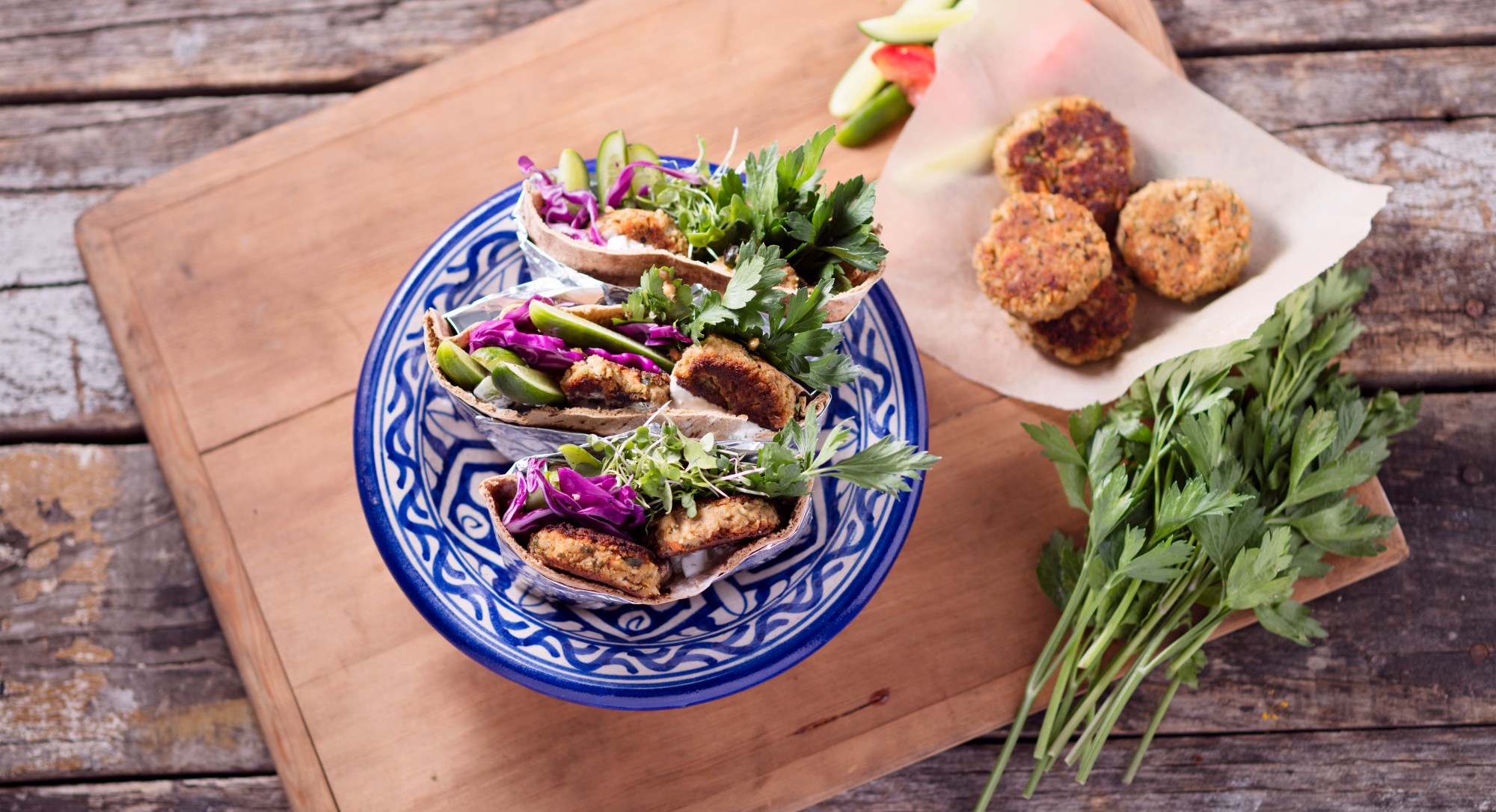
Vegan Chickpea Patties
This recipe sneaks in some anti-inflammatory foods like almond flour, fiber-rich chickpeas, and a diverse selection of spices. You won’t believe these crispy, flavorful patties are healthy!

Yogi Lentil Bowl
Lentils may be the star of the show here, but quinoa and nearly every spice under the sun create a dish that’s ideal for fighting inflammation.

Red Curry Salmon Bowl
Get your omega-3s from one of the richest sources: salmon. With fresh ginger plus paprika, coriander, and cumin, on top of a bed of kelp noodles, pack in even more flavor and health benefits.

Kelp Noodle Jap Chae
Another unique way to experience kelp. Try a Korean-inspired dish with plenty of anti-inflammatory veggies. Extra credit: sub in shiitake for white mushrooms.

Miso Soup with Cilantro-Lime Fish Balls
Here fermented miso is the tasty vehicle for vegetables, ginger, herbs, and buckwheat soba noodles.
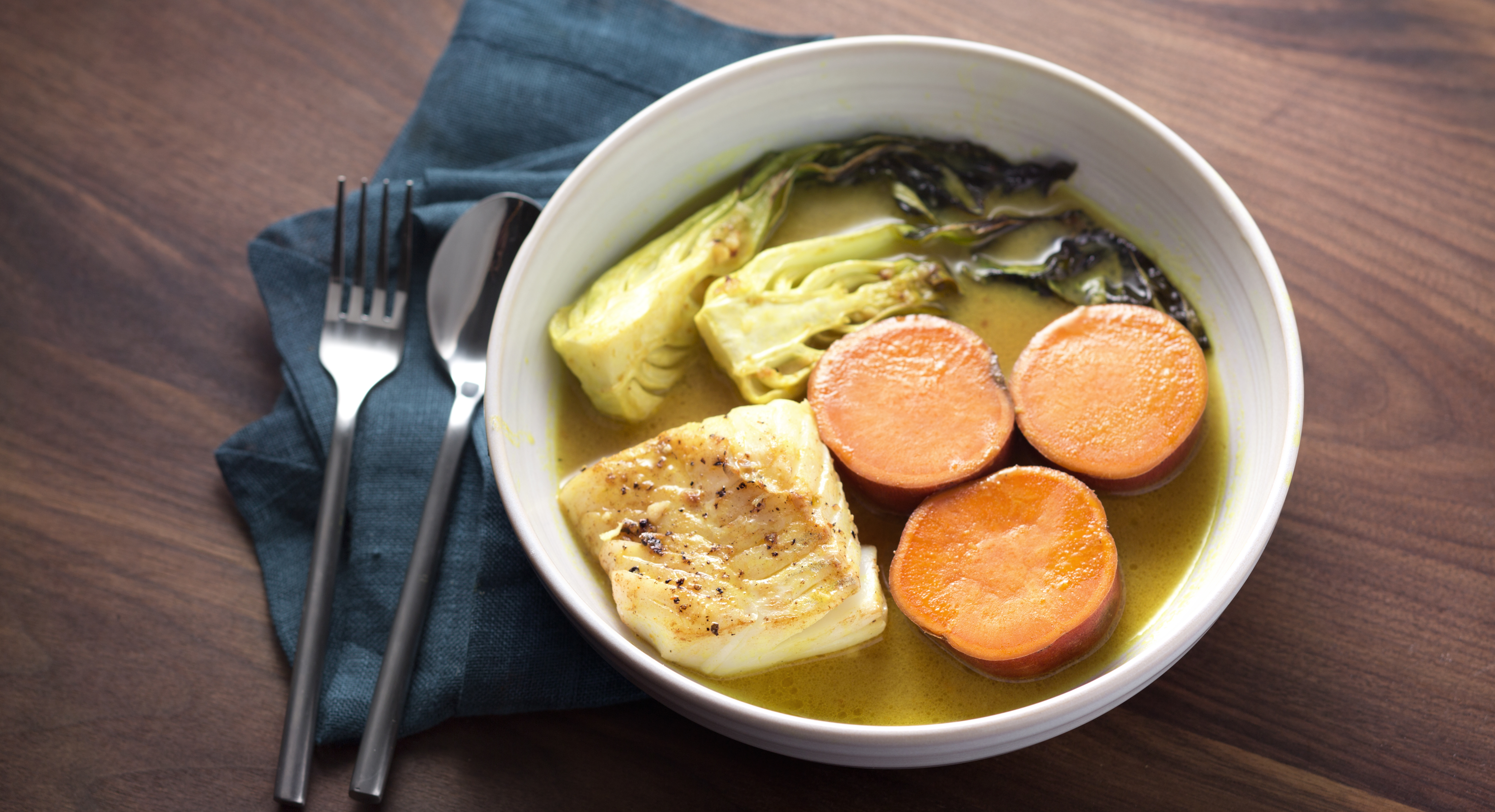
Cod with Gingered Bok Choy, Sweet Potatoes, and Lemongrass Broth
A Thai-inspired dish that features fish along with leafy bok choy, fibrous sweet potato, and garlic, ginger, turmeric, and bone broth—so much anti-inflammatory power!

Whole Cauliflower Braised in Tomato Sauce
Cruciferous cauliflower, anchovies, olives, olive oil, and spices come together in a well-rounded, yet simple one-pot meal.
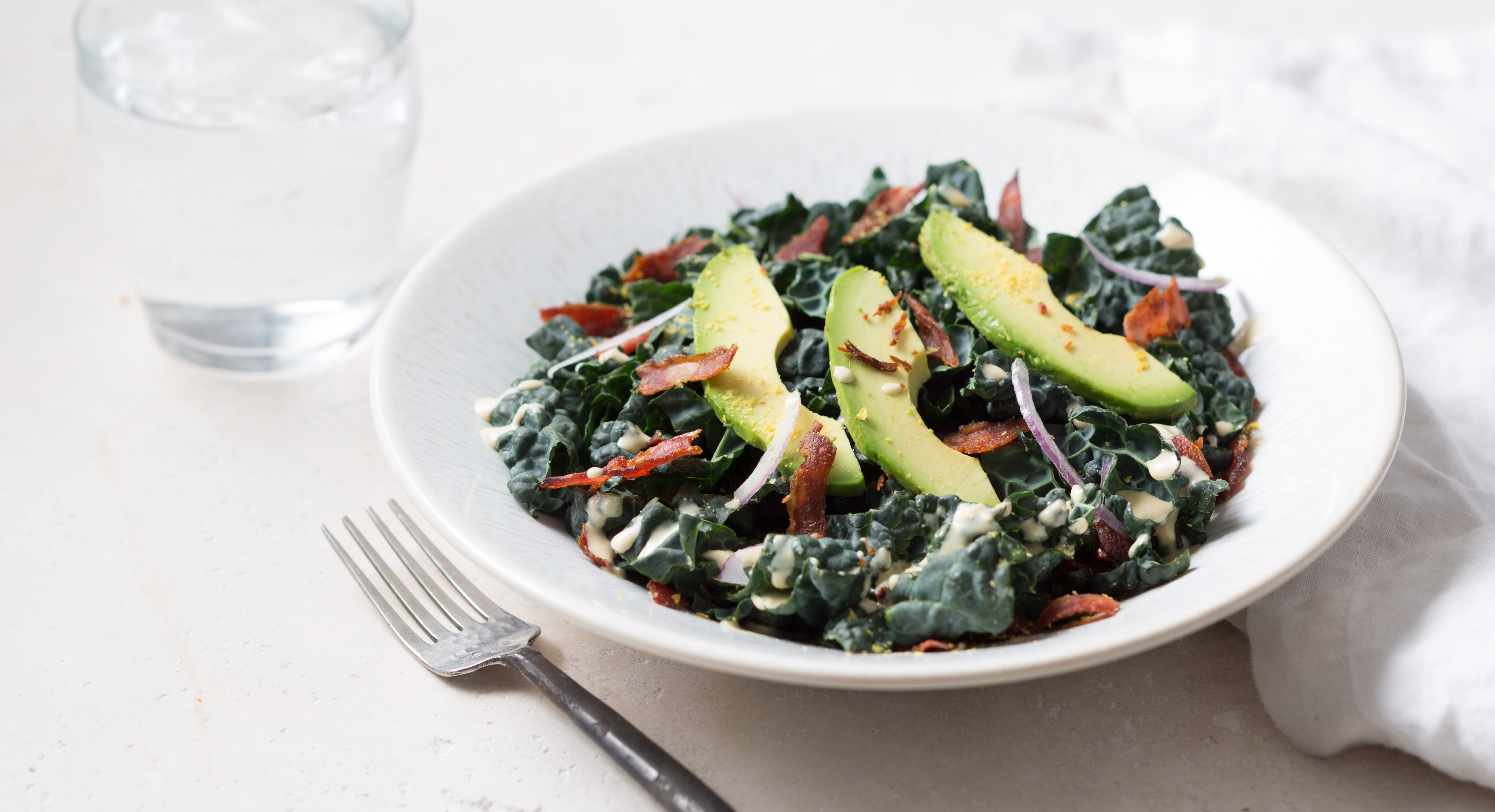
Kale Caesar Salad
Make a healthier Caesar salad by subbing in kale and using an avocado oil–based mayo to make the dressing. (Hold the bacon, which is potentially inflammatory.)

Pumpkin Pie Smoothie
Pumpkin, spices, and seeds make the most nutritious, rich smoothie ever—with no added sugar!

Spiced Apple Oat Cookies
Nope, cookies don’t have to be off-limits on an anti-inflammatory diet. Whip up a batch of these golden, chewy goodies with gluten-free oats, buckwheat, ginger, cinnamon, and cardamom.

Supplements
If you’re not able to get in all of your anti-inflammatory foods on the daily, these supplements can help:
- Vitamin A
- Vitamin B6
- Vitamin C
- Vitamin D
- Vitamin E
- Vitamin K
- Fish oil
- Probiotics
- Turmeric
Anti-inflammatory diet for dogs
Dogs can benefit from an anti-inflammatory diet, too! Select foods that contain some of the following:
- Sweet potatoes
- Butternut squash
- Fish oil
- Berries
- Apples
- Carrots
- Peas
- Broccoli
- Salmon
- Grassfed beef
Avoid foods that contain:
- Wheat flour
- Sugar
- Corn syrup
- Artificial colors
- Artificial flavors

If your pet needs some joint pain relief, thanks to a lifetime of spirited walks and runs, try an all-natural alternative to painkillers in the form of a chewable vitamin with glucosamine, chondroitin, herbs, and antioxidants. Of course, consult your veterinarian for the best anti-inflammatory medications and foods for your dog.
For a healthy digestive system, increased odds of longevity, and not to mention beauty benefits, giving an anti-inflammatory diet a go is a no-brainer. The bottom-line mission is to eat as many natural real foods as you can. And since you’ll be taking in a wide spectrum of colorful ingredients and flavorful herbs and spices, you’ll definitely satisfy your taste buds.
Just remember to consult your doctor before trying this or any other diet or supplement routine. Try it for a month and let us know how it went in the comments below!
This content is not intended to be a substitute for professional medical advice, diagnosis, or treatment. Always seek the advice of your physician or other qualified healthcare provider with any questions you may have regarding a medical condition or treatment and before changing your diet or healthcare regimen, and never disregard professional medical advice or delay in seeking it because of something you have read on this website.
